|
Cold War Warriors The beginning of the end of the Soviet Union
Commander John Murphy, USN, RET
To most Cold Warriors, the 1980s seemed pretty much like the 1970s. It was simply the fourth decade of the Cold War. The Soviets seemed just as feisty and dangerous as ever as the decade began. The 60s had given us the Cuban Missile Crisis, Prague Spring and the chaotic events of 1968 (Kennedy and Martin Luther King assassinations, U.S. civil
unrest, Tet Offensive, Pueblo seizure etc.). Leonid Brezhnev had replaced Nikita Khrushchev as the leader of the Soviet Union. The 70s were interesting, but not as chaotic as the 60s. During this decade there was a Four Power Agreement on Berlin, President Nixon visited China, the SALT I & II treaties (Strategic Arms Limitation) were being negotiated, the Vietnam War had
ended, there was an Iranian Revolution, and the Soviets invaded Afghanistan.
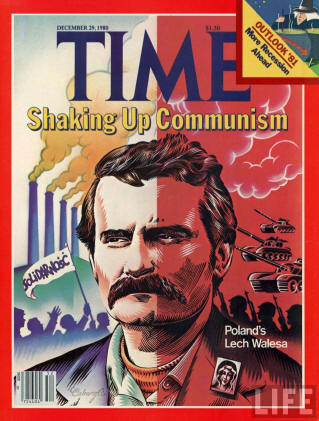 The 80s began with the "Miracle on Ice" (the U.S. Olympic Hockey Team defeated a supposedly invincible Soviet Union); the KGB had bugged the new U.S. Embassy in Moscow; the U.S. boycotted the Moscow Summer Olympics and unprecedented (for a Communist nation) labor strikes occurred at
the Gdansk, Poland shipyards. Then it started to get more interesting. In ‘81 Ronald Reagan was elected as the 40th American President on a platform of opposing détente with the Soviet Union. Leonid Brezhnev died in ‘82 and he was replaced by two caretaker leaders – Yuriy Andropov (died in ‘84) and Konstantin Chernenko (died in ‘85). The 80s began with the "Miracle on Ice" (the U.S. Olympic Hockey Team defeated a supposedly invincible Soviet Union); the KGB had bugged the new U.S. Embassy in Moscow; the U.S. boycotted the Moscow Summer Olympics and unprecedented (for a Communist nation) labor strikes occurred at
the Gdansk, Poland shipyards. Then it started to get more interesting. In ‘81 Ronald Reagan was elected as the 40th American President on a platform of opposing détente with the Soviet Union. Leonid Brezhnev died in ‘82 and he was replaced by two caretaker leaders – Yuriy Andropov (died in ‘84) and Konstantin Chernenko (died in ‘85).
By this time you practically needed a scorecard to keep track of who was in charge in the Kremlin. I was working for CIA as a contract, Russian linguist – helping interview a flood of Soviet Jews that had unexpectedly been allowed to emigrate to the west. Also, I had set up a Russian Studies Center at Booz-Allen & Hamilton Inc. where we were
analyzing the news from Moscow’s "Vremya" News channel (Soviet television coming to us live via the Soviet Gorizont satellites).
Then in 83 I was asked to go aboard the USS Sumter (LST 1181) that was going on a reconnaissance mission in the Barents Sea … near Murmansk. They needed a vernacular, Russian linguist aboard - just in case there were any incidents where the ship’s Captain had to talk with Soviet authorities. I jumped at the chance. This area was still
strategically important in the ‘80s. An area where the Soviets were still testing their latest ships, submarines and missiles. It also was an area where the Soviets had run a series of major naval exercises that were designed to impress us with their ability to send their forces to sea – away from their bases – undetected.
They caught us by surprise in 1970 with Exercise Okean 70 (Ocean ’70) when they deployed a large number of land, sea and air forces worldwide – undetected. This was the Chief of the Soviet Navy, Admiral Sergey Gorshkov’s way of saying, "See – we are a global Navy. We will meet you anywhere!" This was "payback" for the humiliation suffered at
sea during the Cuban Missile crisis. They ran a similar exercise – Okean ’75 in 1975 . Not as big, but still impressive. We got the message.
In 1980 we were there waiting for them – so they did not come out. That is why I really wanted to make the 1983 trip to the Barents Sea. To get a closer look at this still, formidable opponent. It was well worth it. I got a definite feel for the daily life in the home base area of the Soviet Northern Fleet. They obviously did not want us
there. We were getting a good look at some of their latest weaponry and tactics. When they would fire a missile or torpedo – our on board SEAL teams would deploy in their special rubber, Zodiac’ boats to try and grab any weapon before the Soviets could.
I was on constant call to go to the bridge area – in case the Captain wanted to exchange pleasantries with Soviet authorities or the ever-present KGB patrol craft that was assigned to us 24/7. The Cold War seemed very hot to me in 1983. Especially when I listened to the daily noontime radio broadcasts from Radio Moscow or Murmansk’s ‘Radio
Mayak’ (beacon) on my trusty Sony AM/FM radio.
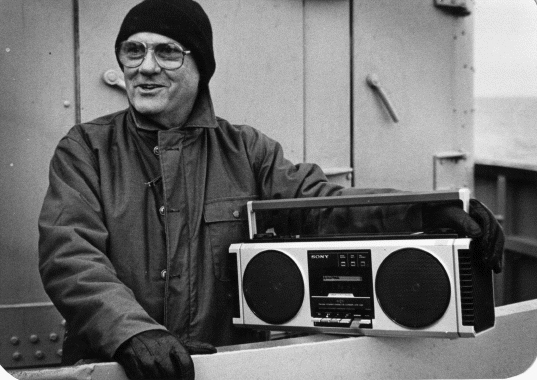
This was also a time when the U.S. was about to introduce its new Pershing IRBM (Intermediate range) ballistic missiles in Germany. The Soviets made it clear that they felt threatened by these missiles. It did not matter that we were putting them in there in response to the new Soviet SS-20 missiles that had just been put into East Germany and
Czechoslovakia. Tit for tat? The Cold War was still hot.
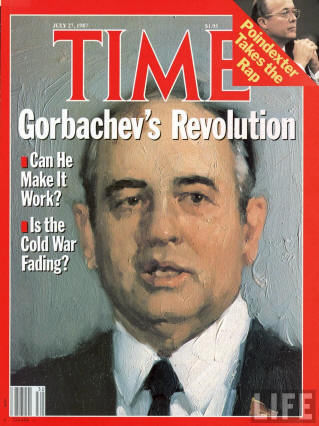 But, in 1985 – things began to change. A Moscow State University (MGU) law school graduate had taken over as Tovarishch in Chief of the Evil Empire. His name? Mikhail Sergeevich
Gorbachev. Moscow State was the alma mater for the best and the brightest of the Soviet Union. But, in 1985 – things began to change. A Moscow State University (MGU) law school graduate had taken over as Tovarishch in Chief of the Evil Empire. His name? Mikhail Sergeevich
Gorbachev. Moscow State was the alma mater for the best and the brightest of the Soviet Union.
Gorbachev would serve from 1985 to 1991 as the last General Secretary of the USSR’s Communist Party and head of state. Unlike his predecessors Brezhnev, Andropov and Chernenko – this was a man of the times. A man with very different ideas and he wasted no time reaching out to his counterpart in the U.S. - Ronald Reagan. At first the U.S.
treated him with suspicion - especially when he spoke of a moratorium on nuclear weapons tests.
Then came a Reagan- Gorbachev summit in Geneva, Switzerland in ‘85. This was followed by a second summit in Reykavik, Iceland in ’86 which led to a breakthrough in nuclear arms control. The Gipper and Gorbie were obviously hitting it off. Speaking the same language so to speak.
By ’87 Gorbachev was changing the lexicon of the USSR with terms such as "Glasnost" (openness) and "Perestroika" (economic restructuring). The west welcomed his new thinking, but "back in the USSR", Gorbachev’s communist party cronies were baffled and concerned. They did not welcome this new thinking – especially that which related to their
cumbersome, state planned economy.
Meanwhile, President Reagan was getting into the swing of things. In June of ‘87 during a speech in Berlin he challenged his summit-mate with the memorable phrase "Mr. Gorbachev, tear down this wall!"
In December of 87, Reagan and Gorbachev met in Washington and signed the Intermediate Range Nuclear Forces (INF) treaty. Many think that the Cold War really ended then and there. By ’88 Gorbachev had begun removing his forces from Afghanistan and Reagan went to Moscow to officially ratify the Intermediate-Range Nuclear Forces (INF) treaty.
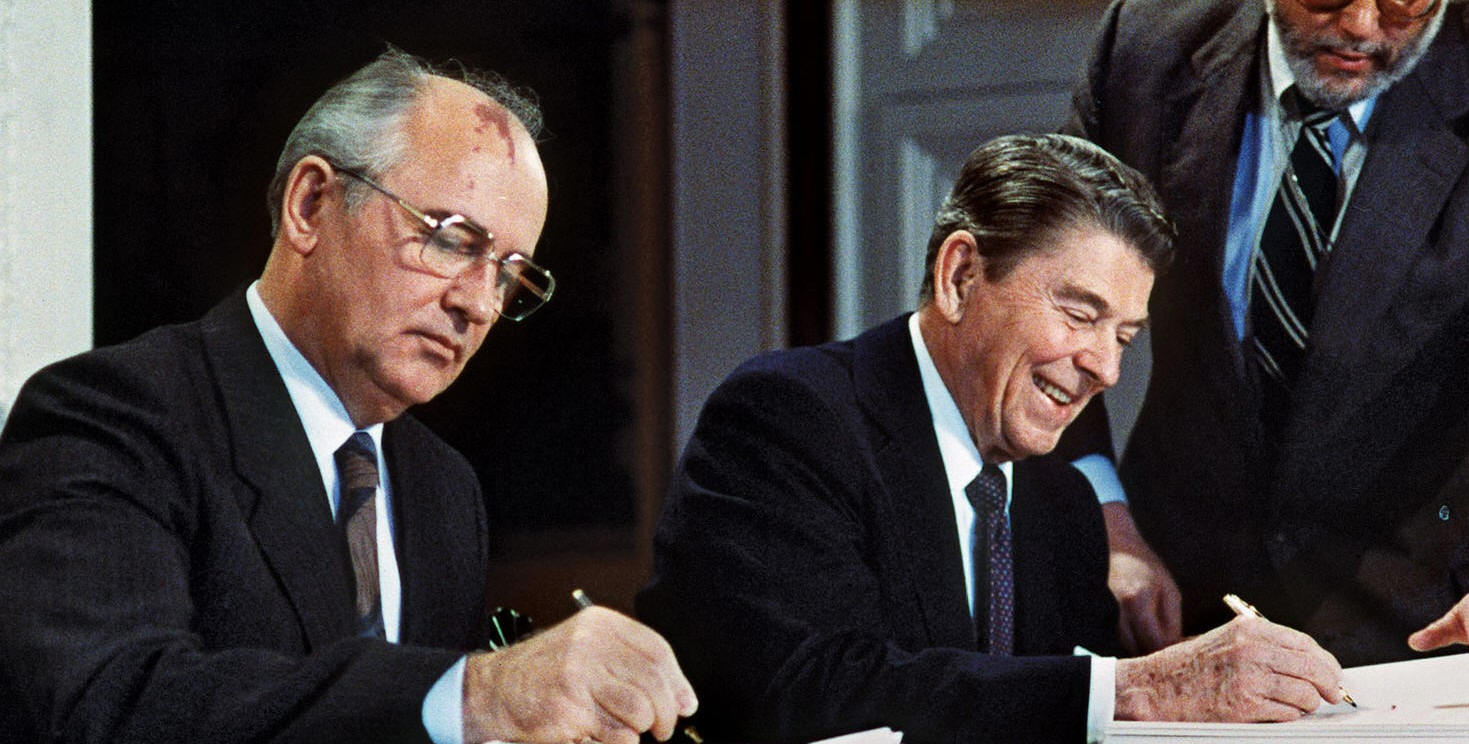
The 80s came to a close with a series of events that foreshadowed the demise of the Soviet Union in the early ‘90s. In 1989, all Soviet troops were removed from Afghanistan; Communist rule in Hungary came to an end; the Berlin wall came down and Gorbachev held a summit with the new U.S. President George H. W. Bush and declared a new era of
peace had begun. Meanwhile in Romania there was a violent revolution ending with the overthrow of the government and the execution of long time Communist ruler, Nicholas Ceausescu.
The scene was set for the 1990s and the collapse of the Soviet Union. It is appropriate that we remember the 1980s as a decade that began with the ‘bugging’ of the U.S. Embassy in Moscow and the 1990s with the grand opening of a McDonald’s Restaurant in downtown Moscow.
For me, the 80s essentially ended on a memorable day in August of ’88 when I served as the Russian interpreter for the visit of the top Soviet naval officer – Admiral Konstantin Makarov – to the Pentagon and the U.S. Naval Academy. Admiral Makarov was the personification of a Soviet Cold Warrior.
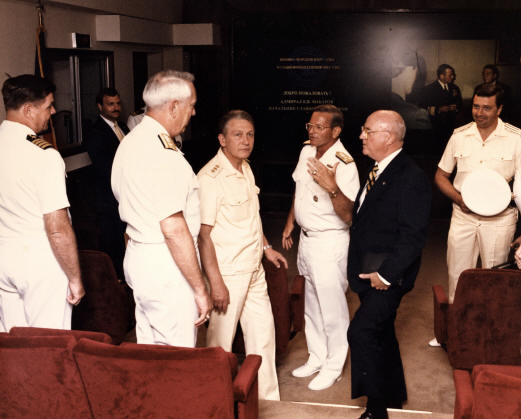
Admiral Makarov arrives in the Pentagon’s Navy Command Center. Here he is being introduced to about 40 U.S. Navy admirals, and their staff. Makarov is in center. To his right is Admiral Henry C. Mustin, USN, the author, and Captain Ivanov, Naval Attache, Soviet Embassy, Washington D.C.
He was a nuclear submariner. One can imagine him as the Captain of the ‘Red October' in Tom Clancy’s hugely popular novel that came out in 1984. Admiral Makarov’s visit was a symbol of the détente that had been reached with the signing of the INF Treaty. On this rather historic day each of the chiefs of the Soviet Army, Navy and Air Force
visited their counterpart in the Pentagon. I can still see the U.S. Navy’s Command Center filled with U.S. Navy Admirals coming to as attention as Admiral Makarov entered the room. Then all sat through a special briefing on U.S. Navy operations - in Russian. All slides and vugraphs were in Russian. I remember thinking "These guys don’t have a clue what is going on here other
than through the pictures."
In future articles I will try to recap memories from over 100 interviews with Soviet Jewish emigres in the 1980s and my day with the Chief of the Soviet Navy at both the Pentagon and U.S. Naval Academy in 1988. The Soviet Jewish emigres of the 1980s turned out to be an unexpected windfall for the U.S. intelligence community. They contained, in
their numbers, many scientists and technicians from the super secret world of the Soviet military industrial complex. How these men and women ever made it past the Soviet emigration screening process amazed me. Obviously the emigres themselves successfully hid the true nature of their employment – many coming from organizations that were known only in the West as a Post
Office Box number.
The scene was being set for the official end of the Cold War and the Soviet Union.
Read other articles by Commander John Murphy
Read other Cold War Warrior
Articles
|